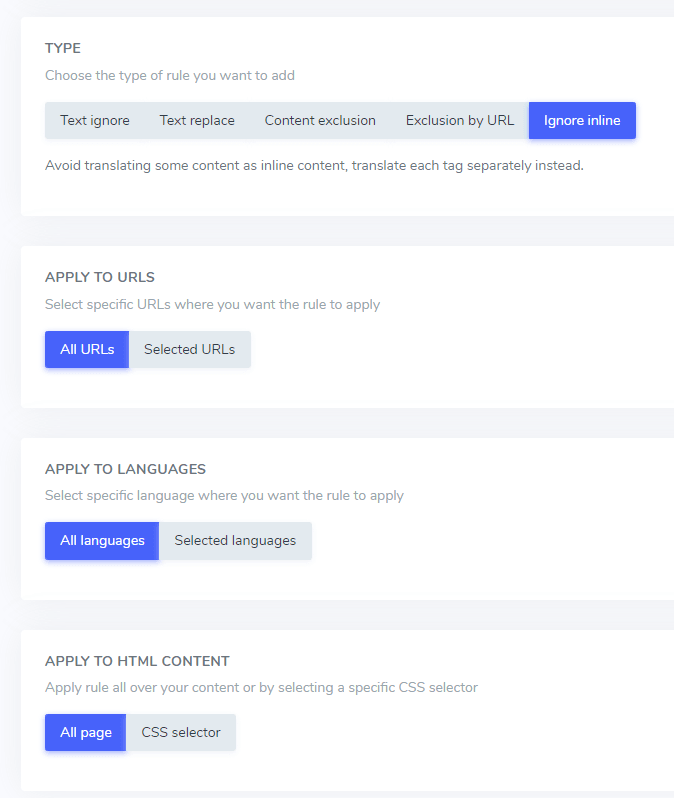Table of Contents
What is inline HTML?
Inline elements are those which only occupy the space bounded by the HTML tags defining the element, instead of breaking the flow of the content.
Inline HTML elements are usually used to add some specific content inside an HTML tag. For example, inside a paragraph of text (a <p> tag) you can make a part of this text in bold by adding a <strong> tag, or you can add a hyperlink with a <a> tag. This is the most frequent HTML inline content, but it can also be font icons or <span> for custom styling.
Here’s a <span> tag inside a heading 1 title:
<h1 class="elementor-heading-title elementor-size-default">
WordPress plugin with <span class="main-pink">neural automatic translation</span>
</h1>
Inline HTML content is considered as complicated to handle by automatic translation tools. By default, it’s regrouped as an individual sentence, to keep the content context, then translated and regrouped in various ways depending on the languages.
You can change this behavior with the “Ignore inline” HTML translation rule.
The ignore inline HTML rule
The “ignore inline” HTML translation rule is a global rule that avoids the HTML tag content to be considered as a single tag, but keep each inline element and translate them separately.

How is that interesting?
Usually, considering the potential translation quality loss, it’s not, but this rule is mainly used to avoid conflict with very exotic inline content.
To add such rule, connect to your Linguise dashboard > click on Rules > Add new rule.

You will then be able to add the replacement details, mainly:
- The rule title (visible only by you in Linguise dashboard)
- The URL where you want to apply the inline translation exclusion
- The languages’ selection to apply the exclusion
- A specific CSS selector to apply the exclusion
